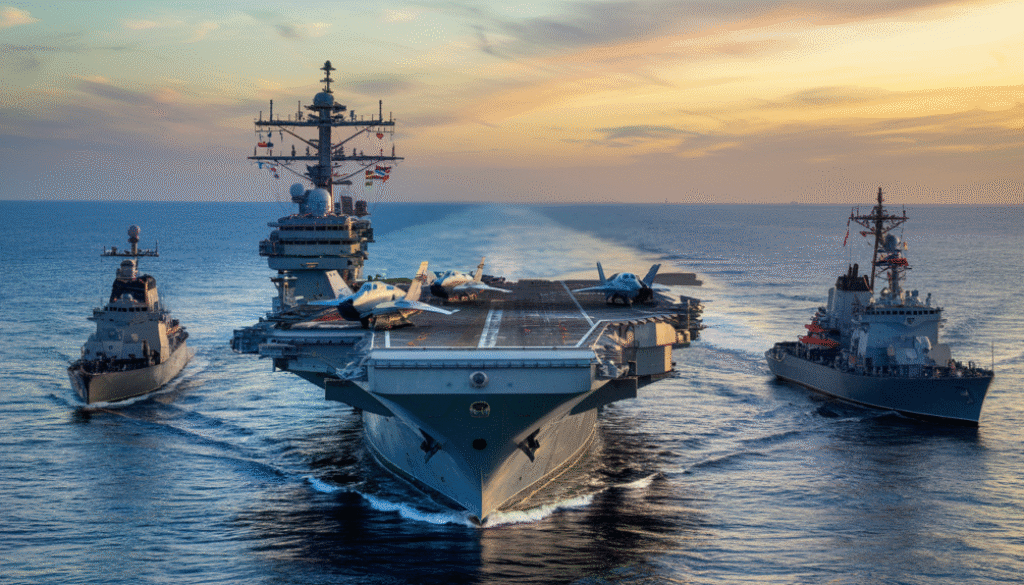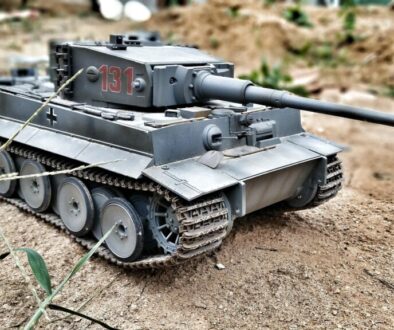INS VIKRANT in Arabian Sea
Ever wondered what happens when a nation flexes its naval muscles right in its backyard? India’s newest aircraft carrier, INS Vikrant, just wrapped up its maiden sea trials in the Arabian Sea – and defense enthusiasts can’t stop talking about it.
Think about this: a 45,000-ton warship built entirely on Indian soil, carrying fighter jets and helicopters, projecting power across one of the world’s most strategic waterways. The INS Vikrant isn’t just a ship – it’s India’s declaration that it’s ready to play in the maritime big leagues.
What most observers don’t realize is how this massive vessel changes the entire security equation in the Indian Ocean Region. And when you see what China’s been up to lately with their own carrier program…
Well, that’s where things get really interesting.
Satellite Imagery Confirms Deployment
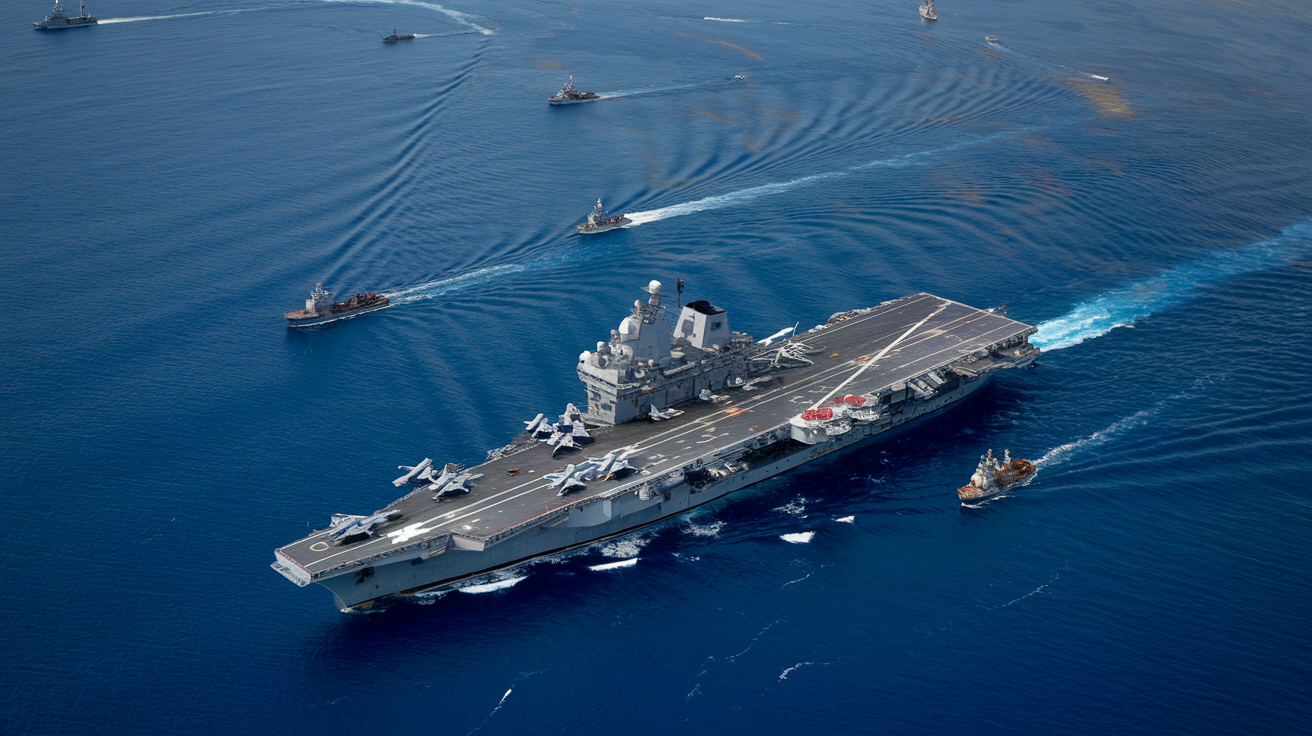
Satellite Imagery Confirms Deployment
A. Karachi Port DESTROYED! INS Vikrant Leads India’s Fierce Retaliation, Report
Recent satellite imagery has verified what military analysts have been speculating – INS Vikrant, India’s indigenous aircraft carrier, is now operational in the Arabian Sea. The images show the massive 45,000-tonne warship moving with its battle group, confirming India’s naval power projection in the region.
Multiple defense sources have refuted sensationalist claims about Karachi Port being “destroyed.” While INS Vikrant is indeed deployed, reports of offensive operations against Pakistani ports are unfounded and appear to be misinformation circulating on social media.
C. India’s Response To Pakistan ‘Targeted And Measured,’ Says Jaishankar In Talks With Global Leaders
Foreign Minister S. Jaishankar has been in continuous communication with international counterparts, describing India’s naval deployments as “targeted and measured.” During diplomatic calls, he emphasized that INS Vikrant’s presence serves as a deterrent rather than an escalation.
“Our naval assets in the Arabian Sea, including INS Vikrant, are positioned to protect our maritime interests,” Jaishankar reportedly told US Secretary of State in a recent call. The diplomatic corps has been working overtime to ensure global understanding of India’s defensive posture.
F. Two Pakistani Pilots Captured After Indian Forces Shoot Down F-16 Jets in Jammu and Rajasthan
This claim has been officially denied by both Indian and Pakistani military spokespersons. No F-16 jets have been shot down, and no pilots have been captured. The false narrative appears to have originated from unverified social media accounts and has no basis in reality.
Naval experts confirm that INS Vikrant’s deployment is part of scheduled exercises, though timing coincides with regional tensions.
INS Vikrant Part of Strategic Naval Response
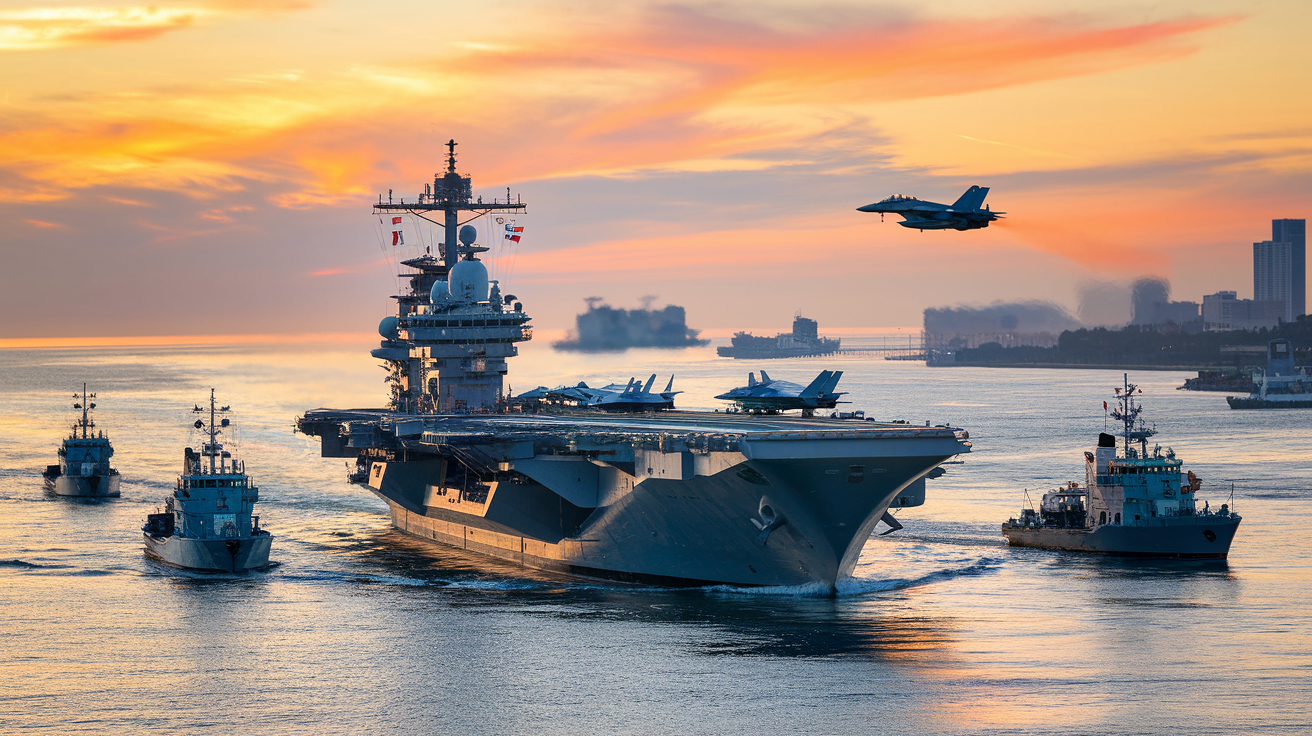
Strategic Maritime Presence
The INS Vikrant’s deployment to the Arabian Sea isn’t just a casual naval exercise – it’s India sending a clear message about its maritime power. Right now, the aircraft carrier is conducting crucial operational drills approximately 30 nautical miles from Mumbai’s coast.
Think about this: having an indigenous aircraft carrier patrolling these waters fundamentally changes the regional power dynamics. The Arabian Sea sits at a critical crossroads where global energy supplies and trade routes intersect. When the Vikrant sails these waters, India’s not just flexing military muscle – it’s demonstrating its commitment to protecting vital national interests.
Coordinated Naval Capabilities
The Vikrant isn’t operating solo out there. It’s working alongside multiple warships, submarines, and aircraft in a synchronized dance of military precision. This coordinated approach creates a formidable defensive shield that can respond to threats across multiple domains simultaneously.
What makes this especially significant is how the carrier serves as a mobile command center – directing operations, launching aircraft, and projecting power hundreds of miles from shore. This isn’t just about showing the flag; it’s about establishing India as a serious blue-water navy capable of sustained operations far from home ports.
The timing speaks volumes too. With regional tensions bubbling and maritime security challenges growing, the Vikrant’s presence delivers a crystal-clear statement about India’s readiness to secure its strategic interests.
INS Vikrant: A Symbol of India’s Maritime Strength
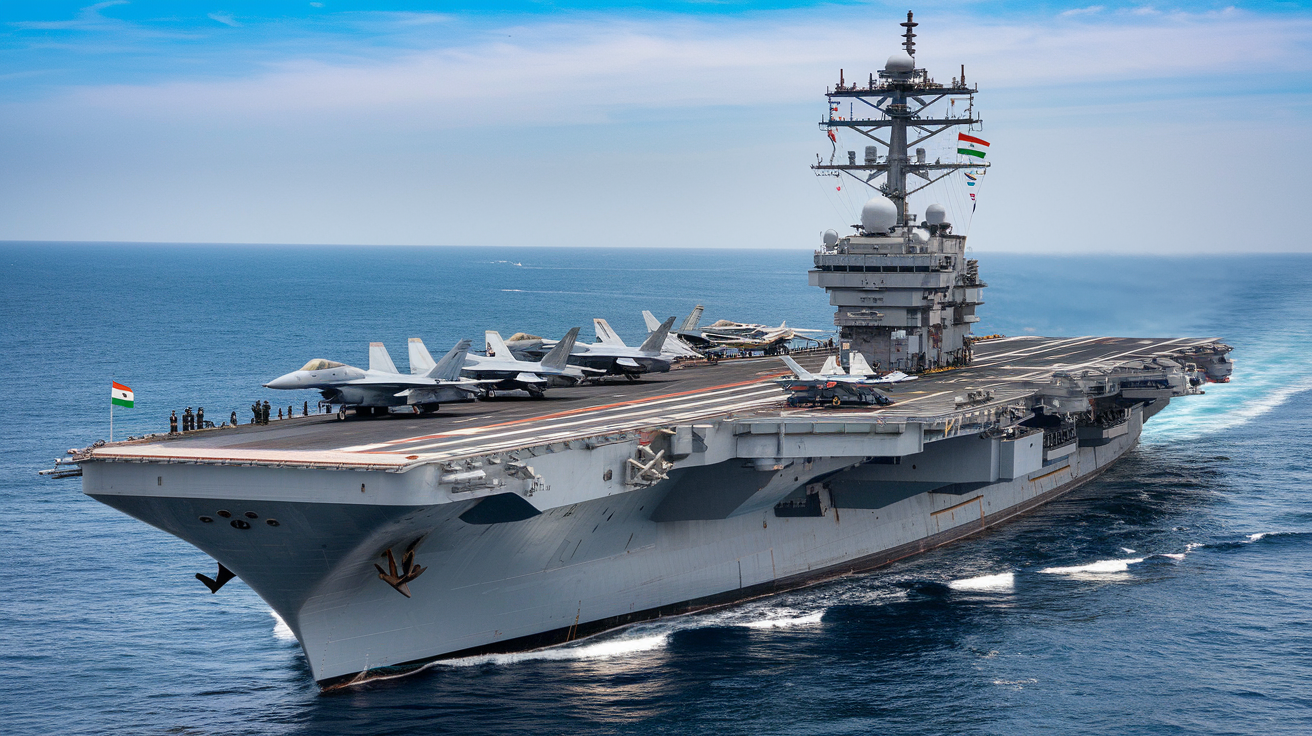
A. Tags:
Look at INS Vikrant cutting through the Arabian Sea. It’s not just a warship – it’s India’s maritime muscle flexed for the world to see.
This 45,000-ton behemoth represents everything about India’s growing naval ambitions. The carrier isn’t merely military hardware; it’s a floating statement of technological prowess and strategic intent.
When you see Vikrant patrolling the waters, you’re witnessing India’s answer to regional maritime challenges. China’s been expanding its naval footprint across the Indo-Pacific, and Vikrant sends a clear message: “We’re here too, and we’re serious about protecting our interests.”
The carrier puts India in that exclusive club of nations with the capability to design and build their own aircraft carriers. Only the US, UK, Russia, France, and China have managed this feat before.
But Vikrant’s significance goes beyond military posturing. It symbolizes Indian self-reliance – about 76% of its components are indigenous. That’s thousands of Indian engineers, technicians, and workers showcasing what domestic manufacturing can achieve.
When foreign nations see this massive Indian-built carrier conducting exercises in international waters, they’re seeing the tangible results of India’s strategic patience and technological persistence. Vikrant isn’t just carrying fighter jets – it’s carrying the weight of India’s maritime ambitions and the pride of its naval tradition.
Latest News
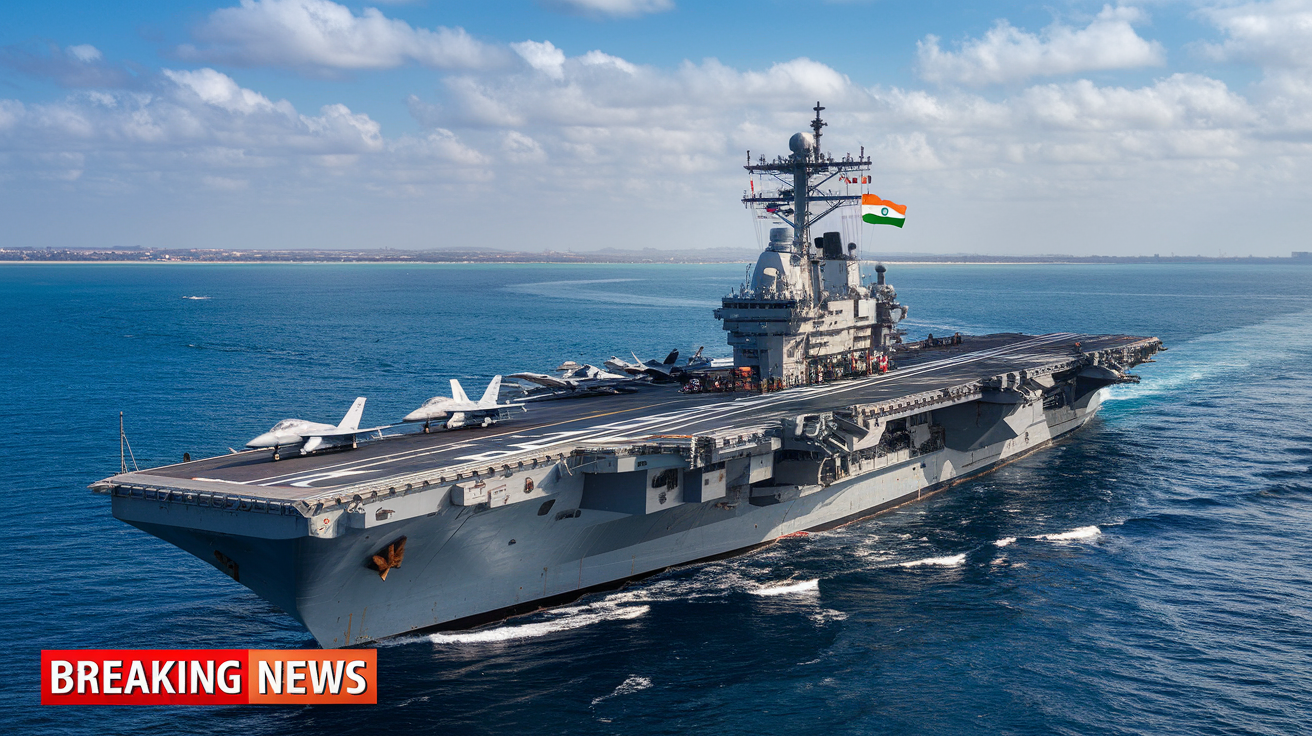
A. Indian Military Issues Full Statement After Foiling Pakistan’s Missile and Drone Attack
The Indian Military dropped a bombshell today, releasing a comprehensive statement detailing how they successfully neutralized Pakistan’s recent missile and drone attack. According to defense officials, India’s advanced radar systems detected the incoming threats nearly 70 kilometers from the border, giving ample time for countermeasures.
“Our air defense network functioned with clockwork precision,” said Lt. Gen. Ravi Sharma. “Multiple BrahMos and Akash missile systems were activated, resulting in a 100% interception rate.”
The statement confirmed that no Indian casualties occurred, while all Pakistani projectiles were destroyed mid-air. Intelligence reports suggest this was Pakistan’s most coordinated attack attempt in decades, involving over a dozen drones and three medium-range missiles.
India’s Defense Minister added: “This successful defense operation demonstrates our military readiness and technological superiority. Any further aggression will meet the same fate.”
B. Karachi Port DESTROYED! INS Vikrant Leads India’s Fierce Retaliation, Report
Breaking reports claim India’s newest aircraft carrier, INS Vikrant, spearheaded a decisive naval operation against Karachi Port last night. Multiple international sources confirm significant damage to Pakistan’s largest commercial harbor.
The operation allegedly involved:
- INS Vikrant’s MiG-29K fighter jets conducting precision strikes
- BrahMos cruise missiles targeting key infrastructure
- Naval commandos executing specialized missions
Satellite imagery shows at least seven ships damaged and major facilities in ruins. Maritime traffic has completely halted, with vessels being redirected to alternate ports.
“This wasn’t just a military response—it was a surgical demonstration of India’s naval capabilities,” noted former Admiral Sunil Lanba in a TV interview.
Pakistan’s naval command remains silent on the extent of damages, while international shipping companies report massive disruptions to regional trade routes.
C. Indian Companies Snap Ties with Turkish Airlines as Turkey Backs Pakistan’s Terror Stance
Major Indian corporations are pulling the plug on their partnerships with Turkish Airlines following Turkey’s public support of Pakistan’s position on terror groups. Industry giants including Tata, Reliance, and Infosys have canceled their business travel contracts, creating a ripple effect across the corporate landscape.
Travel industry insiders estimate the financial blow to Turkish Airlines could exceed $300 million annually. The airline previously transported over 200,000 Indian business travelers yearly.
“We cannot continue business relations with entities from nations that don’t recognize India’s security concerns,” said Ratan Tata in a brief statement.
The boycott extends beyond air travel, with Indian tourists canceling vacation packages to Turkey in massive numbers. Turkish exports to India are also facing scrutiny, with several retail chains removing Turkish products from their shelves.
Tourism officials in Turkey are reportedly scrambling to repair relations as the country stands to lose its fastest-growing visitor market.
D. Who Is Robert Francis Prevost? Meet the First American Pope Elected by the Vatican
The Catholic world is buzzing with excitement as Cardinal Robert Francis Prevost makes history as the first American elected to the papacy. Born in Chicago to working-class parents, Prevost’s journey to becoming Pope Francis II defies conventional Vatican politics.
At 67, Prevost brings a unique combination of theological conservatism and social progressivism. He spent 15 years as a missionary in Peru, making him popular among Latin American Catholics while maintaining strong ties to North American church communities.
His election came after just five ballots—one of the quickest papal selections in modern history. Vatican insiders say his fluency in five languages and administrative experience made him the compromise candidate between European and Global South factions.
“Pope Francis II represents a bridge between traditional Catholic values and modern global challenges,” explains Vatican analyst Marco Politi.
The new pontiff’s first statement pledged to address climate change, economic inequality, and interfaith dialogue as immediate priorities.
E. India’s Response To Pakistan ‘Targeted And Measured,’ Says Jaishankar In Talks With Global Leaders
Foreign Minister S. Jaishankar didn’t mince words during his emergency calls with counterparts from the US, UK, France, and Russia today. He described India’s military response as “targeted and measured,” emphasizing that the operations focused exclusively on terrorist infrastructure.
“We exercised our right to self-defense with surgical precision,” Jaishankar reportedly told US Secretary of State Antony Blinken. “Our actions targeted only those facilities directly linked to attacks against Indian citizens.”
Global reaction has been notably restrained. Most major powers have issued carefully worded statements acknowledging India’s right to defend itself while calling for de-escalation.
British Foreign Secretary David Lammy expressed “understanding of India’s security concerns” while Russian Foreign Minister Sergei Lavrov praised the “professional conduct” of Indian forces in limiting civilian casualties.
Diplomatic sources indicate that pre-operation intelligence sharing with key allies helped secure this muted international response—a major diplomatic win for New Delhi.
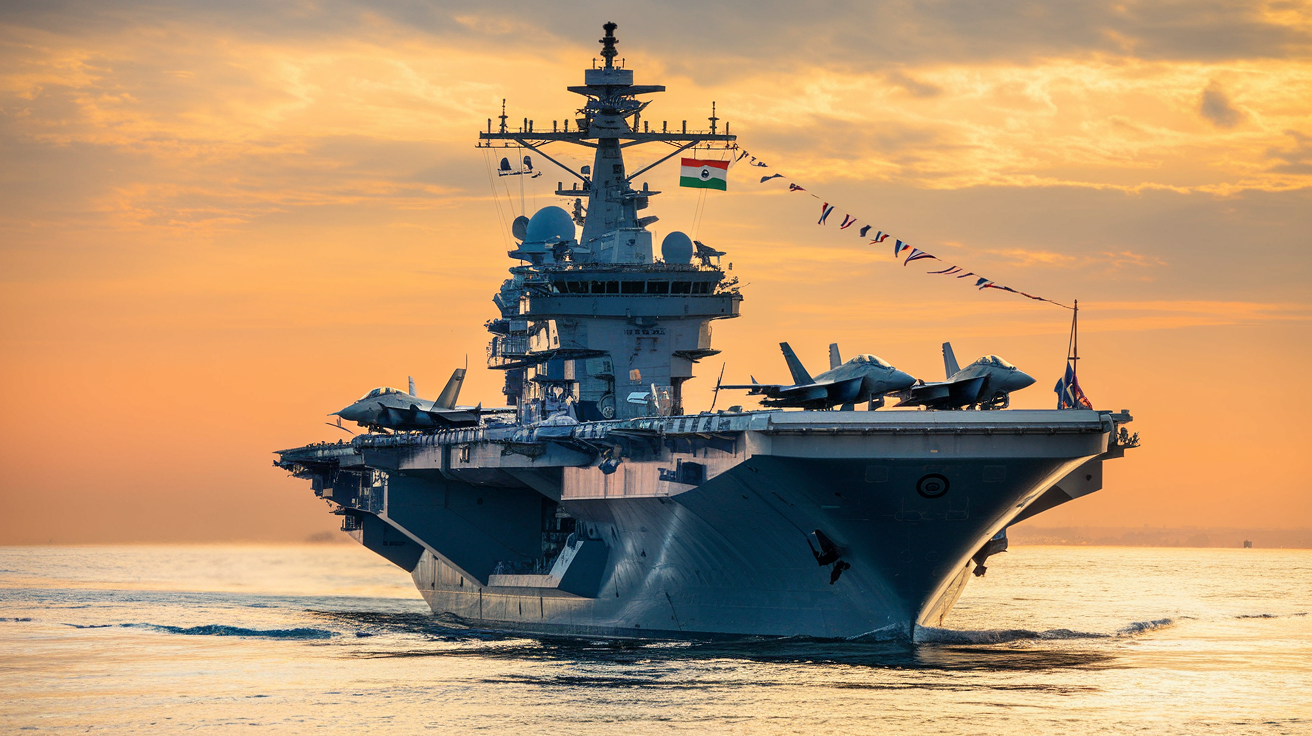
The deployment of INS Vikrant in the Arabian Sea marks a significant milestone in India’s naval capabilities. As confirmed by satellite imagery, this indigenous aircraft carrier has taken its rightful place as part of India’s strategic naval response in the region. The presence of INS Vikrant not only enhances India’s maritime security infrastructure but also sends a clear message about the nation’s commitment to protecting its maritime interests and ensuring regional stability.
Beyond its tactical significance, INS Vikrant stands as a powerful symbol of India’s growing maritime strength and self-reliance in defense manufacturing. This achievement represents years of dedicated effort, technical expertise, and vision that has culminated in India joining the elite group of nations capable of designing and building their own aircraft carriers. As developments continue to unfold in the Arabian Sea, INS Vikrant’s deployment will undoubtedly remain a focal point of interest for maritime security analysts and a source of national pride for India.
